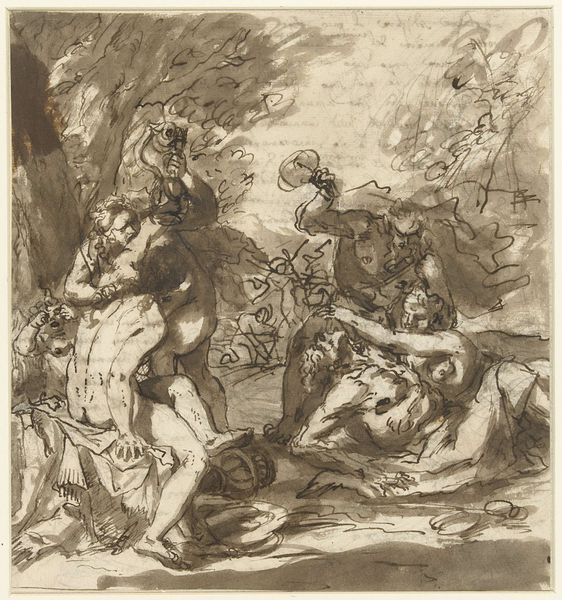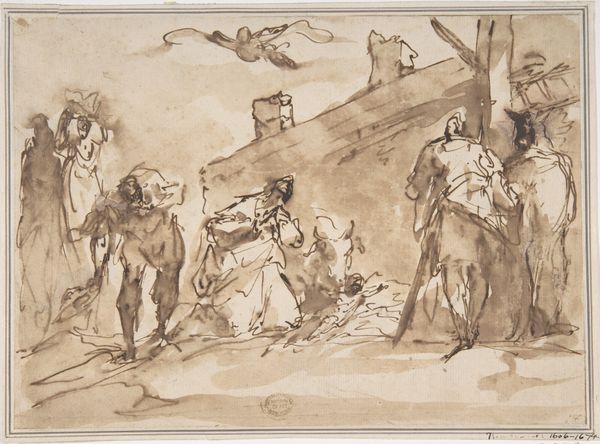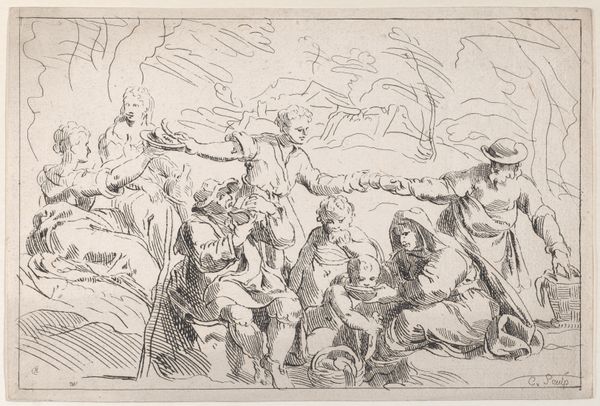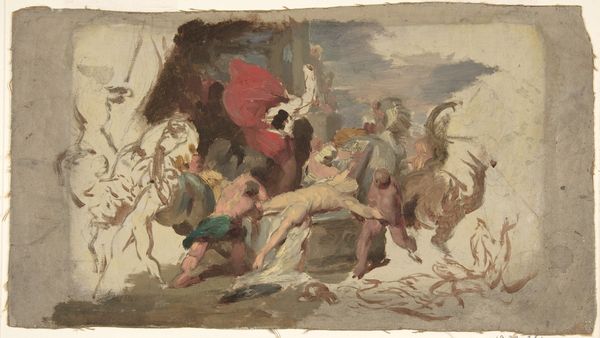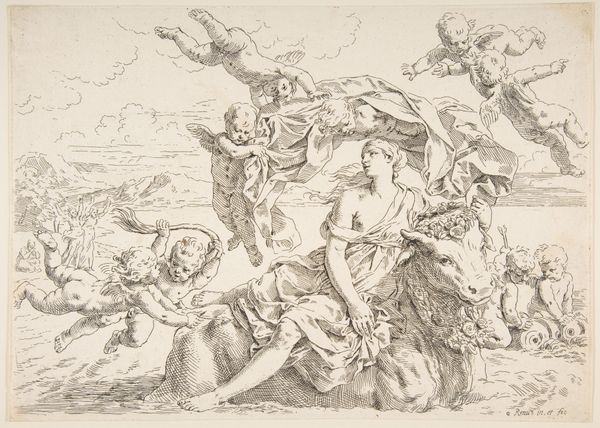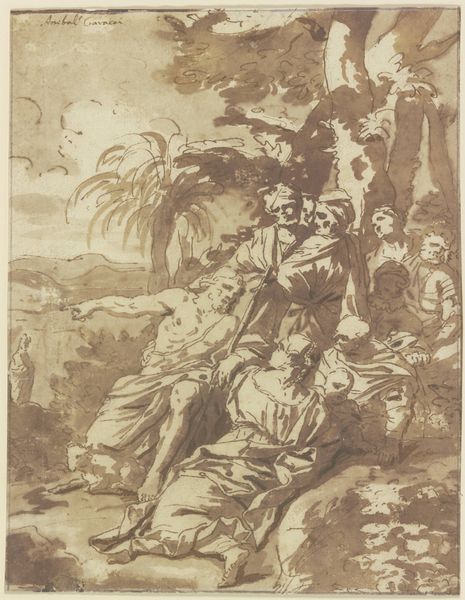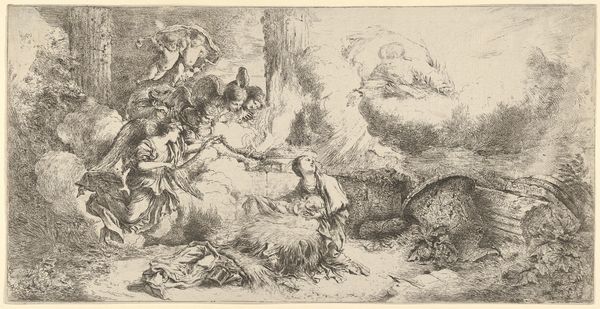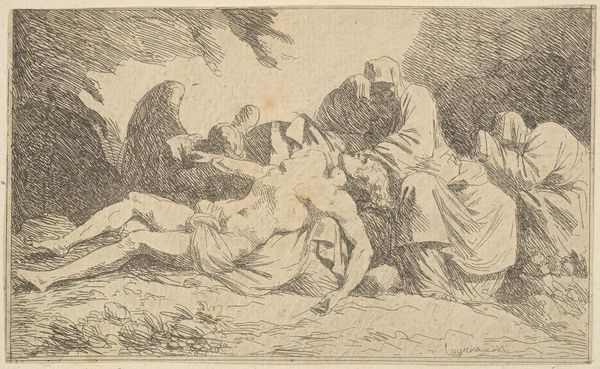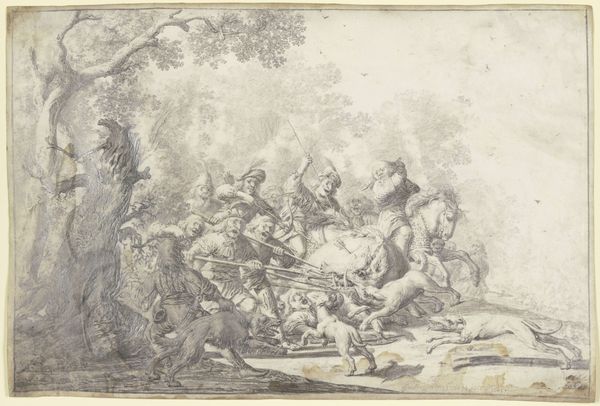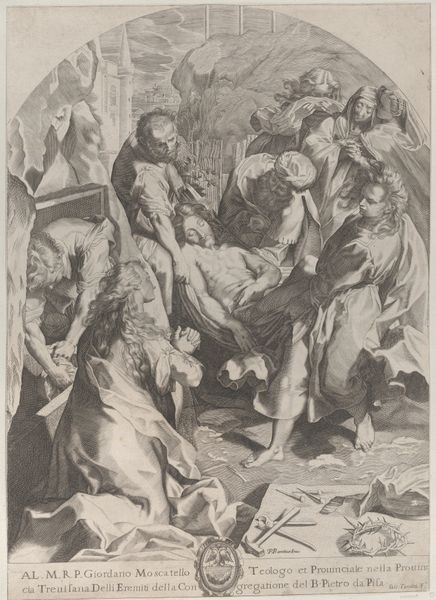![God the Father and Angels Adoring the Madonna and Child [recto] by Giovanni Domenico Tiepolo](/_next/image?url=https%3A%2F%2Fd2w8kbdekdi1gv.cloudfront.net%2FeyJidWNrZXQiOiAiYXJ0ZXJhLWltYWdlcy1idWNrZXQiLCAia2V5IjogImFydHdvcmtzLzBlNjZjNWU1LWRhNGUtNDE4MC05NTc2LTNkOTg3NWY3YzAwNC8wZTY2YzVlNS1kYTRlLTQxODAtOTU3Ni0zZDk4NzVmN2MwMDRfZnVsbC5qcGciLCAiZWRpdHMiOiB7InJlc2l6ZSI6IHsid2lkdGgiOiAxOTIwLCAiaGVpZ2h0IjogMTkyMCwgImZpdCI6ICJpbnNpZGUifX19&w=3840&q=75)
God the Father and Angels Adoring the Madonna and Child [recto] c. 1753
0:00
0:00
drawing, ink
#
drawing
#
allegory
#
baroque
#
figuration
#
ink
Dimensions: overall: 25 × 31.6 cm (9 13/16 × 12 7/16 in.)
Copyright: National Gallery of Art: CC0 1.0
Curator: This compelling ink drawing, executed around 1753 by Giovanni Domenico Tiepolo, is titled *God the Father and Angels Adoring the Madonna and Child*. What's your initial reaction to it? Editor: My immediate sense is one of lightness despite the somber coloration. It almost feels like a fleeting dream caught on paper—the figures seem ethereal and almost weightless. Curator: I see what you mean. The composition is dynamic, with figures arranged in a swirling, upward movement characteristic of the Baroque. Note the carefully placed light and shadow. Tiepolo masterfully employs wash to define forms and create depth, drawing the eye to specific areas like the Madonna's face. The drawing contains this powerful yet understated luminosity and illustrates divine transcendence, as revealed through purely visual techniques, a testament to faith. Editor: Yes, but the process by which Tiepolo arrived at this image also interests me. Consider the kind of labor needed to create this detailed sketch—the repetitive dipping of the pen, the slow, deliberate build-up of the lines. What sort of pigments were available at this moment, and what implications might this medium hold for the piece's portability? Also, to what extent did workshop practices dictate the forms in Tiepolo’s work, as it echoes his father’s better-known painting on the same subject. Curator: Fascinating questions, all of which add another layer of complexity to interpreting the artwork. To go back to our earlier thread, consider the allegorical theme. What significance does it hold to those devout observers that view the piece today? Editor: I believe such sketches are vital documents not only of faith and creative inspiration, but the means by which the message of devotion might have been produced. We are thus brought into consideration of the cultural significance of a work of art—not only the reception of the viewer today, but, by way of art production in 1753, that of devout members of the 18th century. Curator: It’s been enlightening to examine this artwork together, especially in consideration of faith, material history, and, of course, artistry. Editor: Agreed. It's in works like this, particularly Tiepolo’s exploration with material and form, that we can understand the true breadth of devotional artistic expression.
Comments
No comments
Be the first to comment and join the conversation on the ultimate creative platform.
